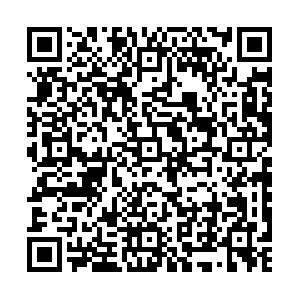Rehabilitation Efficacy of Two Exercise Methods on Adolescent Scoliosis
-
摘要:
目的 比较2种不同类型的运动方式对青少年脊柱侧凸患者的疗效评价。 方法 纳入2022年1~12月期间脊柱侧弯康复治疗患儿。随机分为2组,其中施罗特和核心组(n = 27),家庭运动干预组(n = 16)。2组均进行每周2 d,每次1 h练习。治疗期间对身高、体重、BIM、Cobb角、躯干旋转度(脊柱侧凸测量仪)、胸廓扩张(cm)连续疗效评价。 结果 2022年脊柱侧弯患者康复治疗12个月施罗特和核心组在躯干旋转角右胸段、躯干旋转角左腰段和胸廓扩张度间差异均有统计学意义(P < 0.05),家庭运动干预组躯干旋转角左腰段和胸廓扩张度间差异均有统计学意义(P < 0.05)。 结论 运动疗法联合支具对轻、中度脊柱侧弯的躯干旋转度、胸廓扩张均有改善作用,且早发现、早干预,疗效越好。施罗特和核心组运动疗法优于家庭运动干预组。运动疗法对脊柱侧弯躯干旋转角度有一定的影响。 Abstract:Objective To evaluate the efficacy of two different types of exercise in adolescent patients with scoliosis. Methods 43 children who received rehabilitation treatment for scoliosis from January to December 2022 were included in this study and randomly divided into 2 groups, including Schroth and core group (n = 27) and home exercise intervention group (n = 16). Both groups exercised for 1 hour, 2 days a week. Height, weight, BIM, cobb angle, trunk rotation (scoliosis meter), and thoracic expansion (cm) were continuously evaluated for efficacy during treatment. Results After 12 months of rehabilitative treatment for patients with scoliosis, there were statistical significance between the trunk rotation angles in right thoracic segment and left lumbar segment, and thoracic expansion in Schroth and core group (P < 0.05), and there were statistical significance between the trunk rotation angle of left lumbar segment and thoracic expansion in the home exercise intervention group (P < 0.05). Conclusion Exercise therapy combined with bracing improved trunk rotation and thoracic expansion in mild and moderate scoliosis, and the earlier the detection and intervention, the better the curative effect. The Schroth and core group exercise therapy was superior to the home exercise intervention. Exercise therapy has an effect on trunk rotation angle in scoliosis. -
Key words:
- Cobb Angle /
- Trunk rotation sngle /
- Physical therapy /
- Brace
-
表 1 2022年脊柱侧弯的基本情况[n(%)]
Table 1. Basic information on scoliosis in 2022 [n(%)]
变量 施罗特和核心组(n = 27,62.79%) 家庭运动干预组(n = 16,37.21%) χ2/t P 性别 女 18(66.7) 13(81.3) 1.062 0.303 男 9(33.3) 3(18.8) 户口类型 农村 12(44.4) 6(37.5) 0.199 0.655 城镇 15(55.6) 10(62.5) 民族 汉族 13(48.1) 4(25.0) 2.252 0.133 少数民族 14(51.9) 12(75.0) 年龄[($ \bar x \pm s $),岁] 13.15 ± 2.60 11.13 ± 3.05 −2.313 0.026* 身高[($ \bar x \pm s $),m] 1.56 ± 0.15 1.49 ± 0.19 1.353 0.184 体重[($ \bar x \pm s $),kg] 43.96 ± 11.70 41.22 ± 15.04 0.666 0.509 BMI [($ \bar x \pm s $),kg/m2] 17.66 ± 2.66 17.71 ± 3.13 −0.055 0.957 施罗特和核心组和家庭运动干预组比较,*P < 0.05。 表 2 2022年Risser评分与脊柱侧弯情况分析[n(%)]
Table 2. Analysis of Risser score and scoliosis in 2022 [n(%)]
变量 施罗特和
核心组
(n = 27)家庭运动
干预组
(n = 16)z P Risser指数 0级 0 0 −1.392 0.164 1级 1(3.7) 2(12.5) 2级 5(18.5) 3(18.8) 3级 11(40.7) 8(50.0) 4级 6(22.2) 3(18.8) 5级 4(14.8) 0 Cobb角程度 轻度 16(59.3) 16(100.0) −2.405 0.016* 中度 11(40.7) 0 重度 0 0 施罗特和核心组与家庭运动干预组比较,*P < 0.05。 表 3 2022年脊柱侧弯患者康复治疗的基本情况(
$\bar x \pm s $ )Table 3. Basic information on the rehabilitation of patients with scoliosis in 2022 (
$\bar x \pm s $ )治疗方式 变量 角度 95%CI下限 95%CI上限 t P 施罗特和核心组 躯干旋转角右侧 胸段(T)始-胸段(T)末 0.667 ± 1.359 0.129 1.204 2.550 0.017* 腰段(L)始-腰段(L)末 0.222 ± 2.887 1.364 0.920 0.400 0.692 躯干旋转角左侧 胸段(T)始-胸段(T)末 0.000 ± 1.038 0.411 0.411 0.000 1.000 腰段(L)始-腰段(L)末 0.722 ± 1.788 0.015 1.430 2.098 0.046* 胸廓扩张度始-胸廓扩张度末 1.552 ± 1.115 1.993 1.111 7.229 0.000** 家庭运动干预组 躯干旋转角右侧 胸段(T)始-胸段(T)末 0.044 ± 1.580 0.886 0.798 0.111 0.913 腰段(L)始-腰段(L)末 0.313 ± 0.873 0.153 0.778 1.431 0.173 躯干旋转角左侧 胸段(T)始-胸段(T)末 0.125 ± 0.342 0.057 0.307 1.464 0.164 腰段(L)始-腰段(L)末 0.563 ± 0.814 0.129 0.996 2.764 0.014* 胸廓扩张度始-胸廓扩张度末 0.988 ± 0.395 1.198 0.777 10.006 0.000** 施罗特和核心组和家庭运动干预组比较存在统计学差异,*P < 0.05,**P < 0.01。 -
[1] Trobisch P,Suess O,Schwab F. Idiopathic scoliosis[J]. Deutsches Aerzteblatt International,2010,107(49):875-883. [2] Romano M,Minozzi S,Bettanysaltikov J,et al. Exercises for adolescent idiopathic scoliosis[J]. Cochrane Database Syst Rev,2016,38(14):883-893. [3] Asher M A,Burton D C. Adolescent idiopathic scoliosis: natural history and long term treatment effects[J]. Scoliosis,2006,1(1):2-2. doi: 10.1186/1748-7161-1-2 [4] Weinstein S L,Dolan L A,Spratt K F,et al. Health and function of patients with untreated idiopathic scoliosis: A 50-year natural history study[J]. Jama the Journal of the American Medical Association,2003,289(20):2644-2645. doi: 10.1001/jama.289.20.2644-a [5] Konieczny M R,Hüsseyin Senyurt. Epidemiology of adolescent idiopathic scoliosis[J]. Journal of Childrens Orthopaedics,2013,7(1):3. doi: 10.1007/s11832-012-0457-4 [6] Yue P,Sheng-Ru W,Gui-Xing Q,et al. Research progress on the etiology and pathogenesis of adolescent idiopathic scoliosis[J]. 中华医学杂志:英文版,2020,133(4):11. [7] Reamy B V,Slakey J B. Adolescent idiopathic scoliosis: review and current concepts[J]. American Family Physician,2001,64(1):111. doi: 10.1016/S0095-4543(05):70059-70062 [8] Lehnert-Schroth,Christa. Introduction to the three-dimensional scoliosis treatment according to schroth[J]. Physiotherapy,1992,78(11):810-815. doi: 10.1016/S0031-9406(10)60451-8 [9] Day J M,Fletcher J,Coghlan M,et al. Review of scoliosis-specific exercise methods used to correct adolescent idiopathic scoliosis[J]. Archives of Physiotherapy,2019,9:60-69. [10] Kocaman H,Bek N,Kaya M H,et al. The effectiveness of two different exercise approaches in adolescent idiopathic scoliosis: A single-blind,randomized-controlled trial[J]. PLoS One,2021,16(4):e0249492. doi: 10.1371/journal.pone.0249492 [11] Seleviciene V,Cesnaviciute A,Strukcinskiene B,et al. Physiotherapeutic scoliosis-specific exercise methodologies used for conservative treatment of adolescent idiopathic scoliosis,and their effectiveness: An extended literature review of current research and practice[J]. Int J Environ Res Public Health,2022,19(15):9240. doi: 10.3390/ijerph19159240 [12] Zhou Z,Liu F,Li R,et al. The effects of exercise therapy on adolescent idiopathic scoliosis: An overview of systematic reviews and meta-analyses[J]. Complementary Therapies in Medicine,2021,58(1):102697. [13] Lam T P. Effects of a home-based exercise intervention (E-Fit) on bone density, muscle function, and quality of life in girls with adolescent idiopathic scoliosis (AIS): A pilot randomized controlled trial[J]. International Journal of Environmental Research and Public Health, 18(20): 10899. [14] Moawd S A,Nambi G,El-Bagalaty A E,et al. Combined effect of Schroth method and gensingen brace on cobb’s angle and pulmonary functions in adolescent idiopathic scoliosis:a prospective,single blinded randomized controlled trial[J]. European Review for Medical and Pharmacological Sciences,2023,27(2):601-610. [15] Lonstein J E,Carlson J M. The prediction of curve progression in untreated idiopathic scoliosis during growth[J]. The Journal of Bone and Joint Surgery American Volume,1984,66(7):1061-1071. doi: 10.2106/00004623-198466070-00013 [16] Kubat O,Ovadia D. Frontal and sagittal imbalance in patients with adolescent idiopathic deformity[J]. Annals of Translational Medicine,2020,8(2):29. [17] Qi K,Fu H,Yang Z,Bao L,et al. Effects of core stabilization training on the cobb angle and pulmonary function in adolescent patients with idiopathic scoliosis[J]. J Environ Public Health,2022,2022:4263393. -





 下载:
下载: 










